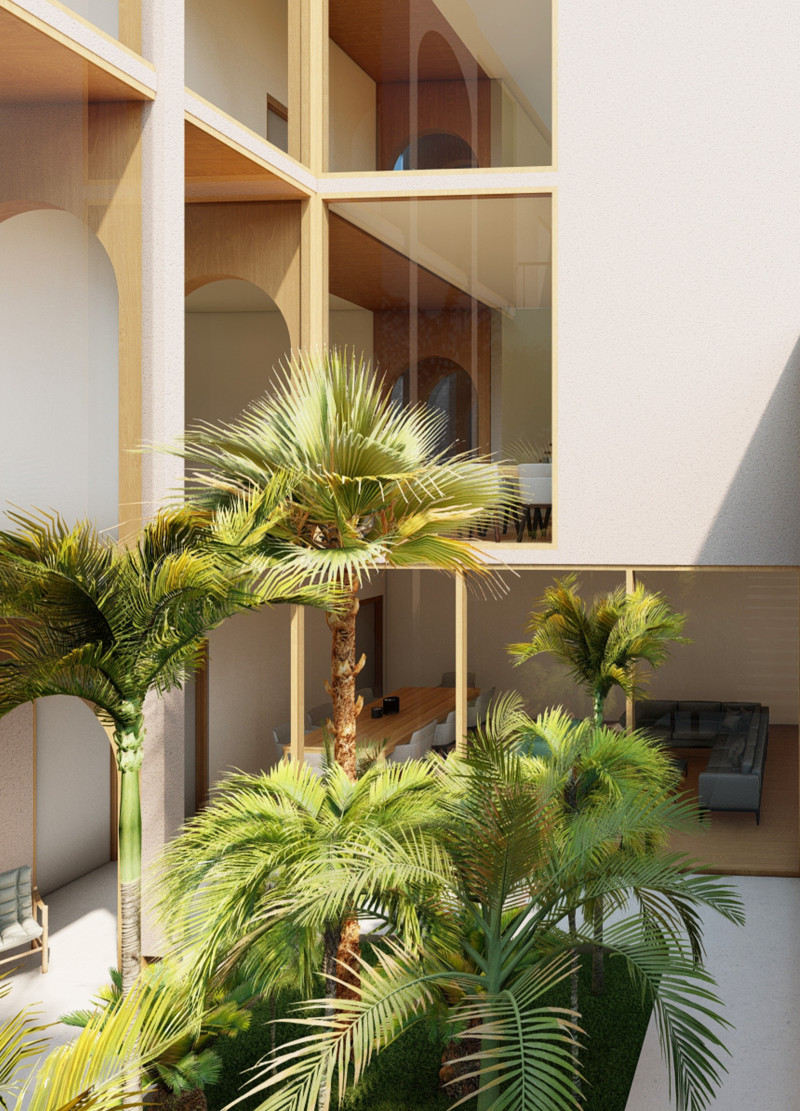5 key facts about this project
The building’s exterior presents a harmonious blend of materials that not only enhance its aesthetic appeal but also contribute to sustainability. The use of locally sourced timber brings warmth and texture to the façade, while expansive glass panels create a connection with the outdoor landscape, allowing for an abundance of natural light. The juxtaposition of these materials exemplifies a modern design approach focused on reducing the carbon footprint while promoting energy efficiency. Metal accents strategically placed throughout the structure add a contemporary flair, reinforcing structural integrity and reflecting the dynamic nature of the urban context.
Upon entering the space, the interior layout reveals meticulous planning that emphasizes usability and comfort. Open floor plans encourage social interaction, creating a seamless flow between different areas. The design includes flexible spaces that can easily be reconfigured for various activities, catering to community needs. This adaptability is a crucial aspect of the project, as it allows the building to evolve over time, accommodating changing uses and demographics.
Significant attention has been paid to the interior finishes, which further enrich the user experience. Natural materials dominate, with polished concrete floors providing durability while maintaining a modern aesthetic. Ceilings are thoughtfully designed with varying heights, creating an engaging sense of scale and proportion. The incorporation of greenery through indoor plants and vertical gardens reinforces the connection to nature and enhances air quality, fostering a sense of well-being among occupants.
Unique design approaches are evident in the building’s structural elements as well. Innovative roof designs not only enhance the visual profile of the structure but also serve functional purposes, such as water collection and solar energy integration. These features showcase a commitment to sustainable design and underline a forward-thinking architectural philosophy. The careful consideration of natural light and ventilation throughout the project ensures that energy consumption is minimized, promoting a healthy environment.
The architectural plans, sections, and designs reflect a coherent narrative that ties together the various components of the project. The thoughtful arrangement of spaces illustrates a keen understanding of how people interact with architecture. This design celebrates community and individual well-being, inviting users to explore the myriad opportunities for engagement within the structure.
In summary, this architectural project represents a future-focused approach that honors both design and sustainability. It stands as a testament to the potential for architecture to contribute positively to the community, enhancing the quality of life while being conscious of environmental impacts. To delve deeper into the facets of this innovative project, I encourage you to explore its architectural plans, sections, and designs. Engage with the architectural ideas that motivated its conception, and gain a wider perspective on how these elements collaboratively create a meaningful and functional space.


























